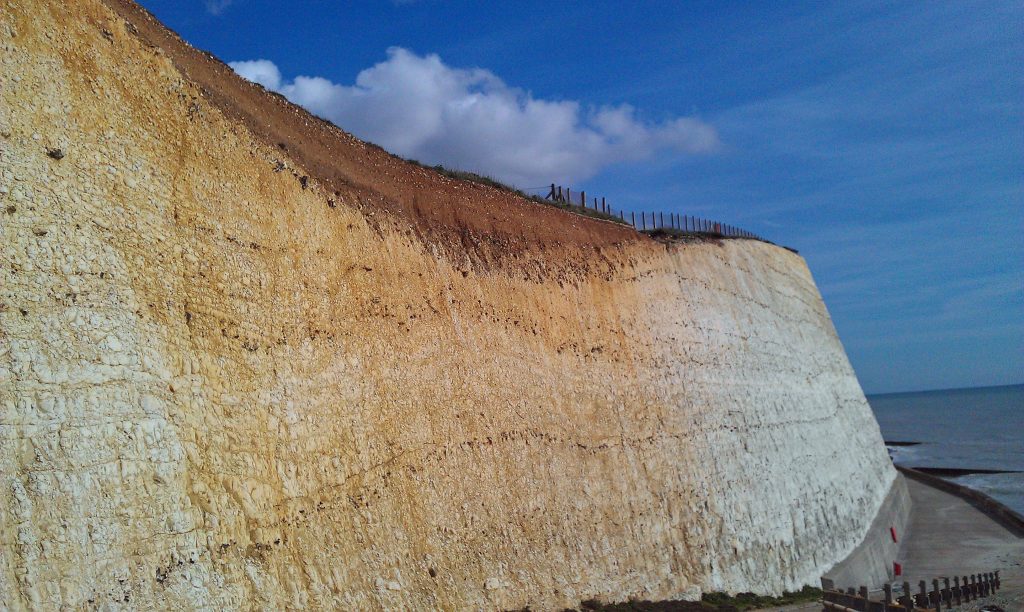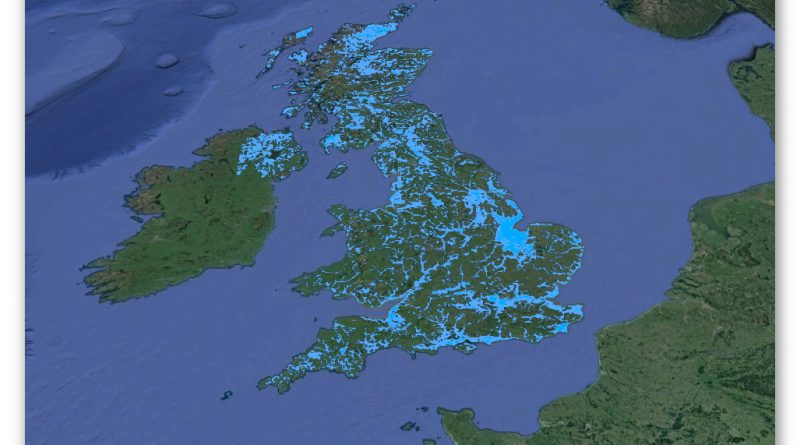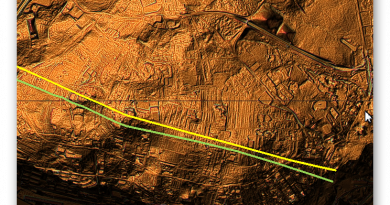BGS Prehistoric River Map
According to the Superficial Soils left after the last ice age – here is the map of Prehistoric Rivers (Palaeochannels) created after the last ice age. The question that has been unanswered is HOW LONG did these Prehistoric Rivers (see Prehistoric River Map) exist in History?
Please Note – this is the MINIMAL extent of the flooding as the size of the deposits are an ESTIMATION based on bore hole evidence. (BGS Prehistoric River Map)
Twelve thousand years ago, according to our written history, the glaciers from the last Ice Age finally melted away, revealing the Britain we know today. For over 100,000 years (at the end of the Pleistocene Epoch) Britain had been underneath two miles of ice, compressing the ground by its sheer weight, so much so, that the land surface was then some 2,000 feet below its original level. Which has consequently risen back slowly, to become the landscape we know and are familiar with nowadays.
Geologists have assumed that these glaciers melted due to warming in climatic conditions creating a series of ‘meltwater pulses’ over a short period of time, but they have failed to date to produce a realistic model that fits the total meltwater discharge which eventually created not only the North and Irish Seas but the hundreds of feet of sea-level rises that we are still experiencing today.
If you study any British Geological Society (BGS) map of Britain, you will notice it shows a series of bedrock, sedimentary and superficial deposits. Below these deposits, is a labyrinth of material that look like canals and gigantic waterways which lay under the surface on top of the bedrock, which is the remains of Palaeochannels from the last ice age. This evidence is a testament to how the landscape would have looked when the rivers were at their highest and when they were discharging at their maximum levels.
These superficial deposits that resemble ancient rivers can be seen on the surface and are known to archaeologists, geologists and the general public as ‘Dry River Valleys’ – because the river valleys today are currently dry. These great waterways can be readily seen in profile in the cliffs and valleys of the South Downs, where they show their curved river nature by the remains of the superficial subsoil consisting of sand, silt and clay.
Past geologists have failed to identify these huge concave broken chalk sections of the cliffs accurately, or to date the river terraces deposited from the remains of the meltwater of the last glaciation maximum (LGM), as they have historically only identified the gravels and bedrock within geological periods. Their arguments are compounded as they fail to explain why they are relatively short distances from the sandy silt to today’s topsoil or why silt and sand are at elevations above supposed earlier river terracing, so they suggest these deposits are ‘windblown Loess’ – blown into position rather than deposits laid down by rivers of the past.
This book uses existing scientific evidence from peer-reviewed publications and modern mathematical models to give you an understanding of how the landscape looked in the Holocene period, giving archaeologists the tools to reveal fresh discoveries and a better understanding of our history. (BGS Prehistoric River Map)

| Figure 1 – Cliffs of the South Downs, showing the size and scale of the ‘Superficial Deposits’ – Prehistoric River Map |

Figure 2 – Close inspection shows that the chalk is broken and has been re-laid with extra sand and silt in-between the ‘tossed chalk’ – Geologists find this impossible to date accurately – Prehistoric River Map
Further information can be found HERE or on our our VIDEO CHANNEL (BGS Prehistoric River Map)
Further Reading
For information about British Prehistory, visit www.prehistoric-britain.co.uk for the most extensive archaeology blogs and investigations collection, including modern LiDAR reports. This site also includes extracts and articles from the Robert John Langdon Trilogy about Britain in the Prehistoric period, including titles such as The Stonehenge Enigma, Dawn of the Lost Civilisation and the ultimate proof of Post Glacial Flooding and the landscape we see today.
Robert John Langdon has also created a YouTube web channel with over 100 investigations and video documentaries to support his classic trilogy (Prehistoric Britain). He has also released a collection of strange coincidences that he calls ‘13 Things that Don’t Make Sense in History’ and his recent discovery of a lost Stone Avenue at Avebury in Wiltshire called ‘Silbury Avenue – the Lost Stone Avenue’.
Langdon has also produced a series of ‘shorts’, which are extracts from his main body of books:
For active discussions on the findings of the TRILOGY and recent LiDAR investigations that are published on our WEBSITE, you can join our and leave a message or join the debate on our Facebook Group.





Pingback: Gigantic Prehistoric Dykes (Canals) -